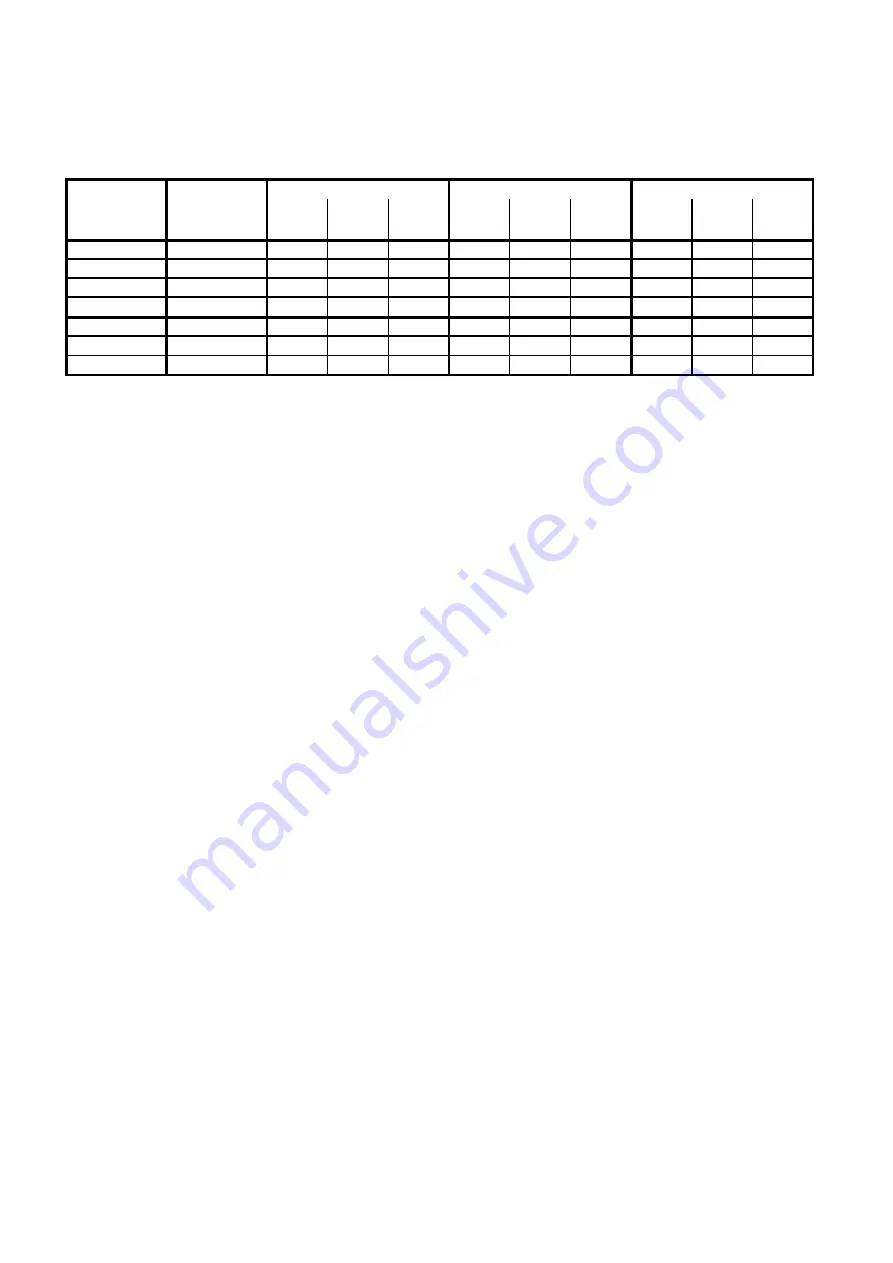
ULTRAFLOW® 54 (H)/(J)
54
Kamstrup A/S ∙ Technical Description ∙ 5512‐1554_J1_GB_04.2018
9.3
Suggested test points
Nom. flow
Meter factor
q
p
q
p
q
i
0.1xq
p
q
p
q
i
0.1xq
p
q
p
q
i
0.1xq
p
[m³/h]
[imp/l]
[m³/h]
[m³/h]
[m³/h]
[min]
[min]
[min]
[kg]
[kg]
[kg]
0.6
300
0.6
0.006
0.06
3
20.0
6
30
2
6
1.5
100
1.5
0.015
0.15
3
20.0
6
75
5
15
2.5
60
2.5
0.025
0.25
3
20.2
4.8
125
8.4
25
2.5
50
2.5
0.025
0.25
3
24
6
125
10
25
3.5
50
3.5
0.035
0.35
3
17,1
6
175
10
35
6
25
6
0.06
0.6
3
20,0
6
300
20
60
10
25
10
0.1
1
3
12,0
6
500
20
100
Test quantities
Test duration
Test point
Table 20. Suggested test points, test durations and test quantities for ULTRAFLOW
.
The suggested test parameters are based on EN 1434-5 and q
i
:q
p
1:100.
The test set-ups have been selected on the basis of the following requirements:
Minimum test duration of 3 minutes
Water volumes at q
i
and 0.1xq
p
of minimum 10 % of the water volume per hour
Water volume at 0.1xq
p
corresponding to minimum 1000 pulses
Water volume at q
i
corresponding to minimum 500 pulses
These suggested test points can be optimised for the rig as well as for the test purpose.
9.4
Optimisation in connection with calibration
To make a rational test of ULTRAFLOW
®
it must be possible to reproduce test results. This is also very important if
the tested sensors are to be adjusted.
Experience shows that ULTRAFLOW
®
operates with standard deviations of 0.3…0.4 % at q
i
and 0.2…0.3 % at q
p
.
These are standard deviations at 300…500 pulses at q
i
, 3000…5000 at q
p
, and flying start/stop.
In connection with optimisation of calibration the following sub-components can be considered:
Pressure:
Optimal working pressure is 4…6 bar of static pressure. This minimises the risk of air and cavitation.
Temperature:
Calibration temperature according to EN 1434-5 is (50±5) °C for heat meters.
Water quality:
Recommended water quality as in CEN TR 16911 and AGFW FW 510.
Installation (mechanical conditions):
To facilitate easy purging during meter testing, we recommend to mount ULTRAFLOW
®
with the electronics
(transducers) facing downwards. Note, that ULTRAFLOW
®
must
NOT
be evacuated (subjected to vacuum). If you
focus on testing the recommended installation angle, rotate the electronics (transducers) to the side as shown in
Figure 10
. However, experience with ULTRAFLOW
®
has shown that the error curve is not significantly influenced by
the orientation of the flow sensor.
To avoid flow disturbances, the inlet pipes and distance pieces must have the same nominal diameter as the
sensors (see
Table 21
). There should be min. 5 x DN between the sensors. In connection with bends etc. there
should be a minimum distance of 10 x DN. If tests are made at low flow with a bypass at right angles to the pipe, it
will be an advantage to mount an absorber of pressure fluctuations caused by the perpendicular inlet. This can be
a flexible tube on the bypass. In addition, it will be an advantage to mount a flow straightener before the first
distance piece. Flow disturbances such as pulsations, e.g. pump fluctuations must be minimised. In connection
with calibration, a code of practice for distance pieces has been made on the basis of many years' experience:
The lengths of the distance pieces must be 10 x DN.
The diameter of the distance pieces must be:
Содержание ULTRAFLOW 54 Series
Страница 2: ...ULTRAFLOW 54 H J 2 Kamstrup A S Technical Description 5512 1554_J1_GB_04 2018...
Страница 6: ...ULTRAFLOW 54 H J 6 Kamstrup A S Technical Description 5512 1554_J1_GB_04 2018...
Страница 91: ...ULTRAFLOW 54 H J Kamstrup A S Technical Description 5512 1554_J1_GB _04 2018 91...
Страница 92: ...ULTRAFLOW 54 H J 92 Kamstrup A S Technical Description 5512 1554_J1_GB_04 2018...
















































